
Hiking can be a great form of exercise as well as a fun way to spend more time with your dog. Any dog owner knows it’s important to provide mental and physical stimulation to keep your dog healthy and well-adjusted, and hiking fits the bill. But it’s important to recognize anyone who enjoys backwoods trails has a responsibility to care for the environment and preserve the tranquility of wild lands.
When you decide to set out on a trail, you know you are responsible for your own actions. As a dog owner, you have an additional responsibility – your dog’s actions. This means you’re accountable for the safety of other hikers, bicyclists, runners, horses and their riders. You’re also responsible for the impact your dog has on trail vegetation and wildlife.
What’s more, your dog is a representative of all dogs every time you take him or her hiking with you. When there are incidences of poor hiking trail etiquette, the likelihood of trail restrictions for dogs increases.
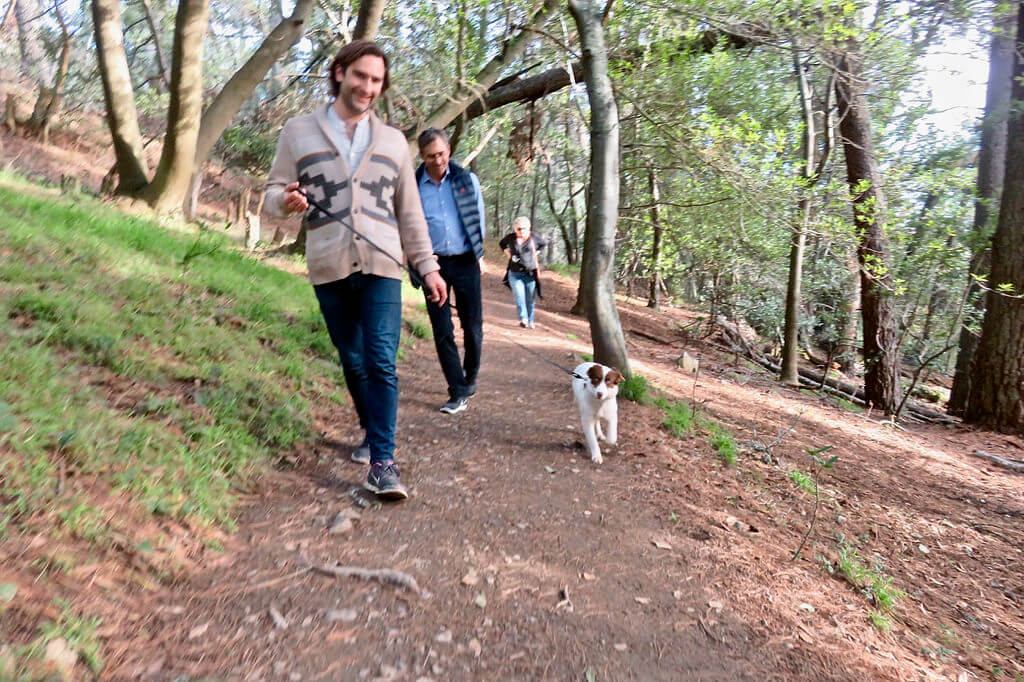
Most trail incidents occur because dog owners are uninformed; dogs will act according to their nature and training. The better our dogs behave, the more they’ll be welcome to hike with us in the future.
Here are five simple rules of dog hiking trail etiquette to help your dog showcase his or her best manners on the trail.
-
Choose a dog-friendly hiking trail
It seems simple and straightforward: know the rules for each trail and follow them. Take the time to find out if your dog is even welcome in the first place. As a general rule of thumb, dogs are not allowed in most national parks except in designated areas but are welcome in national forests. Check ahead to avoid disappointment. And never attempt to bring your dog on a trail clearly marked off-limits to dogs.
Click here for 30 Best Dog Friendly Hiking Trails in Colorado Springs
-
Follow the trail leash law
Make sure you are informed of the leash law requirement for the trail you plan to hike and follow it. When on leash, your dog must demonstrate excellent leash skills and recall. Also, be sure to use a non-retractable leash while hiking. Some trails will require it for safety reasons. Some trails will require a 6-foot long leash or less, but some terrain may lend itself to a longer leash if the rules allow it.
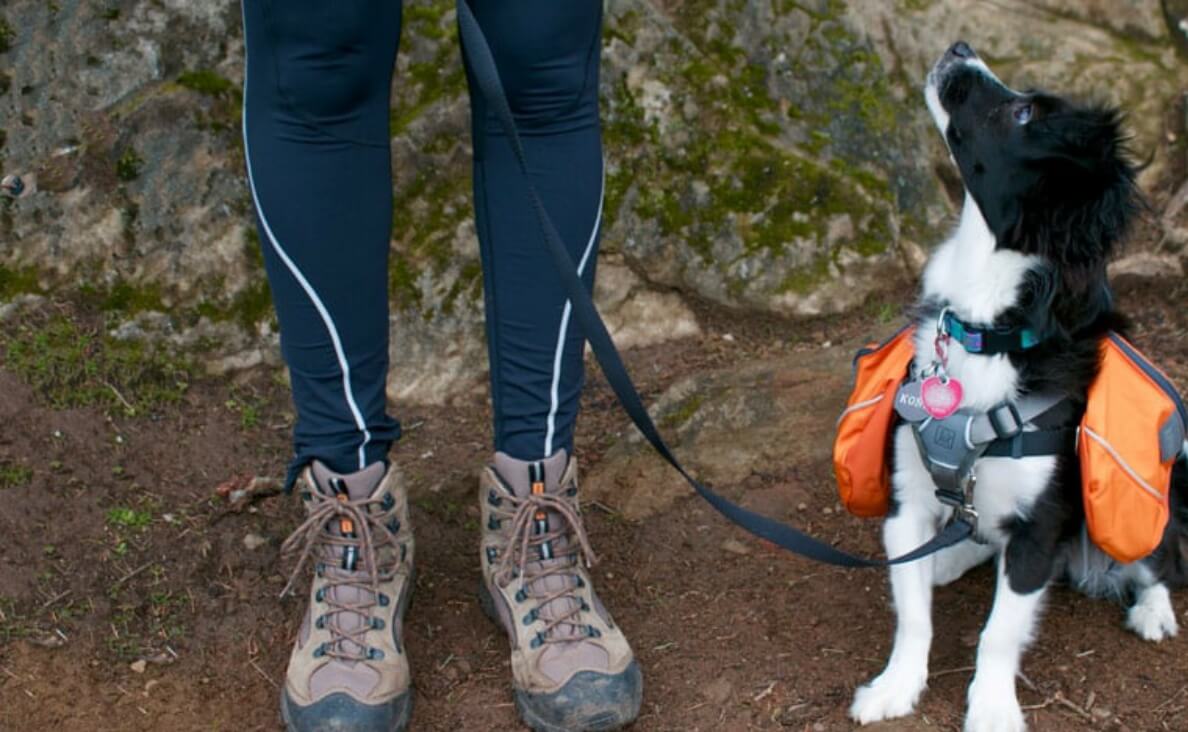
How do you know your dog is ready to hit the trail with you?
A trail-worthy dog will be responsive to your voice commands. Your dog should be able to:
- Hike easily with a loose lead.
- Stay at a true heel or very close to you.
- A dog who yanks on the leash is not trail-ready. Please continue working with your dog to ensure he or she is ready to hike with you.
Why are retractable leashes prohibited or not encouraged?
They can cause serious injuries to both dogs and humans, including burns, cuts, and even amputations. Furthermore, the thin cord is not conducive to controlling a dog at full extension. They don’t teach your dog to walk nicely close to you and instead reinforce pulling. The cord is not very strong and can break if your dog yanks strongly. They also don’t help your dog communicate with other dogs very well. An approaching dog may see your dog pulling but may not see the cord. This could be construed as aggressive behavior to the other dog.
What if off-leash hiking with your dog is permitted?
If off-leash hiking is permitted, your dog should be able to stay within sight and sound of you and respond immediately to voice recall. This means your dog should be able to:
- Demonstrate appropriate social behavior with other dogs and humans
- Heel immediately on request and continue heeling
- Refrain from barking
- Demonstrate competence with these commands the first time (repeated commands amount to a request, not a command)
- No
- Sit
- Stay
- Come
- Down (or off)
- Leave it
- Ignore wildlife and other distractions on the trail at your command
- Demonstrate the ability to pass in close proximity to other hikers and their dogs without incident
Even though off-leash hiking is permitted, be sure to keep a leash handy in case there is an incident. Even if your dog acts appropriately, other dogs may be fear-aggressive or still in training, so you may need to leash your dog as you pass by.

-
Yield right-of-way to all others on the trail
Yielding means getting your dog out of the way of other hikers, cyclists, horses, and dogs. If your dog is off-leash, immediately leash your dog when you see someone else. Place your dog in the sit-stay position until they have passed. Choose a side section of trail if possible; if your dog is small, pick him or her up to avoid trampling the trail vegetation.
Note: many dogs like to chase bicycles. Make sure your dog understands he or she will not be allowed to chase them.
When it comes to passing horses, your dog is obliged to get out of the way of a horse. Horses are much larger than dogs and can injure your dog if provoked. Move to the downhill side of the trail if possible, but if you must move uphill, try to stay low so you’re not towering over the horse. Stay visible and speak in a normal tone of voice so the horse stays calm. Keep your dog close by your side until the horse has passed you completely.
Here are some tips for managing trail encounters with other dogs:
- Don’t allow your dog to lunge at other dogs.
- Ask whether a quick greeting is okay with the other dog; keep it to a quick, friendly sniff, and then be on your way and ignore the other dog.
- Allow dogs to approach each other from behind. This is a natural approach position in wild dogs; a head-on approach can be perceived as threatening.
- In the event of a bite: Exchange vaccination records with the other hikers. People (and dogs) bitten by dogs with an unknown vaccination history must undergo a series of rabies injections.
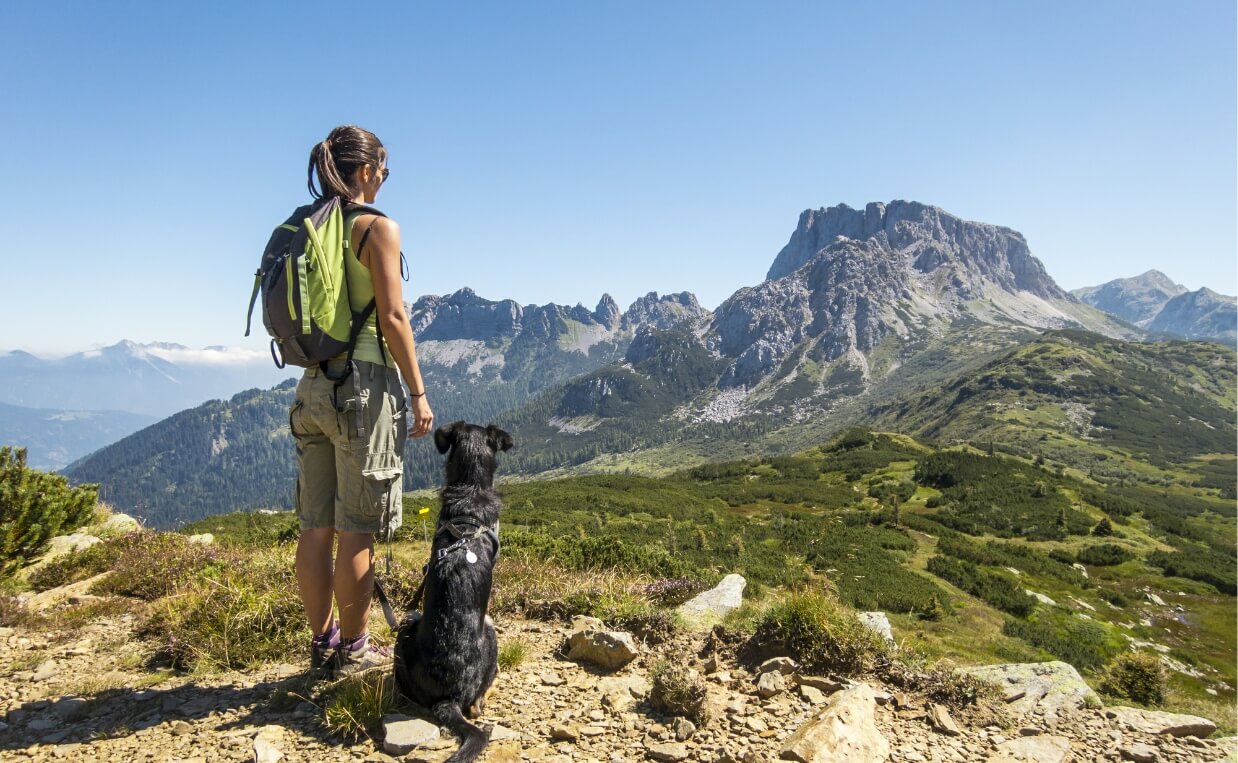
-
Be kind to the environment
Leave plants and wildlife undisturbed when hiking with your dog. Stick to the trail; resist the urge to cut across trail switchbacks or blaze new trails. Walk on rock as much as possible when hiking above the tree line.
Do not disturb wildlife, even if you want photos. Allowing your dog to bark or chase after wildlife is intrusive and can incite an attack.
The best rule of thumb is to leave all plant and animal life exactly as you found it for everyone to enjoy.
-
Pack out your dog’s waste
An important hiking trail etiquette is to pick up after your dog. No one enjoys hiking on trails littered with dog waste. While the waste of one dog may not seem like a big deal to you, when you have dozens of dogs on a trail every day, the amount of waste can become overwhelming.
Dog waste is harmful for several reasons. Dog food is derived from processed foods so it is considered unnatural; this is why it degrades slowly. According to the CDC, one day’s worth of dog waste can contain several billion bacteria laced with Giardia, hookworm, tapeworms and other harmful bacteria. If your dog waste reaches waterways, it can be harmful to other animals, wildlife, and even humans.
Consider this: In 2018, a study was conducted on dog waste in Boulder, Colorado’s Open Space and Mountain Parks. Of the 150 miles of public trails over 45,000 acres, 90 percent are open to dogs. An estimated 30 TONS of dog waste is left behind on those trails annually.
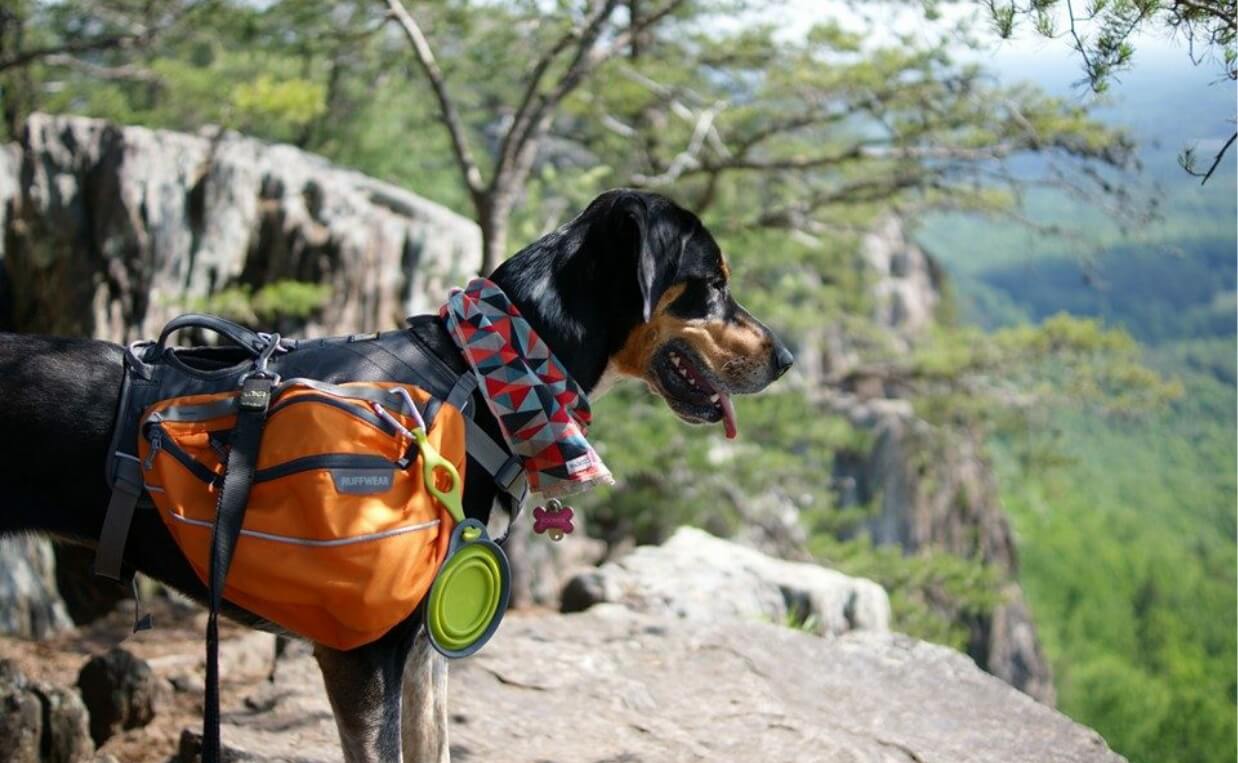
According to Leave No Trace principles, the best practice for dealing with dog waste is to pack it out. In some places, you can bury it in a hole 6 to 8 inches deep and 200 feet from water sources, depending on the trail rules where you’re hiking.
There are various odor-free methods for storing canine waste while you continue on your hike. One of the best options is a container like a PooVault. It’s a good idea if you’re out on a short day hike. Another option is the TurdleBag, dog waste bag carrier. These are designed for longer or over night hiking trips. It attaches to your dog’s leash, harness or backpack.
There are lots of options out there; a simple Google search should bring up a variety of ways to store and carry out your dog’s waste.
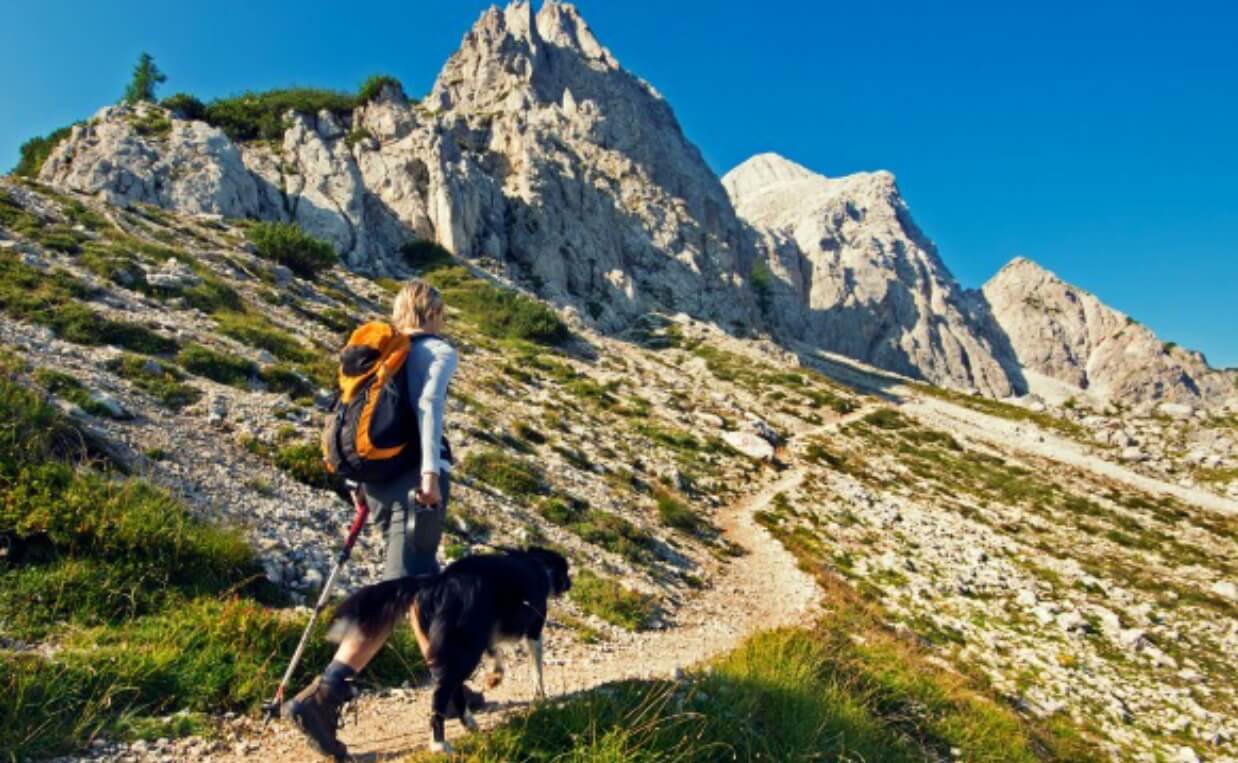
When it comes to trail etiquette for hiking with dogs, there is one essential “golden rule”, to use common sense and simple courtesy towards others. Your dog will love hiking and being close to you, as well as enjoying the exercise and amazing smells he or she will encounter in the big, wide outdoors. But be sure to honor the posted dog rules and regulations; they’re meant to keep you, your dog and everyone else safe. Let common sense and common courtesy define your dog’s hiking trail etiquette; set an example with your well-mannered canine hiking companion.
Do you take your dog hiking? What other hiking trail etiquette tips do you think should be on this list? Please share in the comments below…

 5 Ways to Celebrate New Year’s Eve With Your Dog
5 Ways to Celebrate New Year’s Eve With Your Dog 10 Ways to Celebrate Christmas with Your Dog
10 Ways to Celebrate Christmas with Your Dog Unleashing Joy: The Best Dog Toys of 2023
Unleashing Joy: The Best Dog Toys of 2023 How to Prepare for a Professional Dog Photo Shoot
How to Prepare for a Professional Dog Photo Shoot 8 Outstanding Health Benefits of Dog Ownership
8 Outstanding Health Benefits of Dog Ownership






Leave a Reply